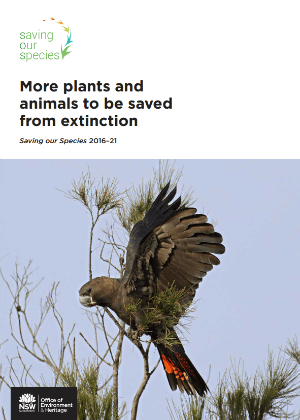 The categories include:
The categories include:
- critically endangered
- endangered
- vulnerable.
Species may also be listed as extinct or extinct in the wild and ecological communities listed as collapsed. The Biodiversity Conservation Act also lists key threatening processes.
Criteria in the regulation are used to determine which species and ecological communities fit into which category.
Critically endangered
Species and ecological communities are listed as critically endangered if they are facing an extremely high risk of extinction in Australia in the immediate future.
Endangered
Species or ecological communities are listed as endangered if they:
- face a very high risk of extinction in Australia in the near future.
Vulnerable
Species and ecological communities are listed as vulnerable if they:
- face a high risk of extinction in NSW in the medium-term future.
Extinct species
Species are listed as extinct if there is no reasonable doubt that the last member of the species in Australia has died
Species that are listed as extinct in the wild are species known to survive in Australia in cultivation or captivity. There may be a naturalised population outside the past range or it hasn't been recorded in its habitat in Australia despite surveys in a time frame appropriate to their life cycle and type.
Collapsed communities
Collapse occurs when the natural occurrence of the ecological community has lost its composition, structure and function.
Key threatening processes
A process is listed as a key threatening process if:
- it adversely affects threatened species, populations or ecological communities
- it could cause species, populations or ecological communities that are not threatened to become threatened.
More information
For more information about the nomination, public exhibition and determination processes visit the NSW Threatened Species Scientific Committee pages.


